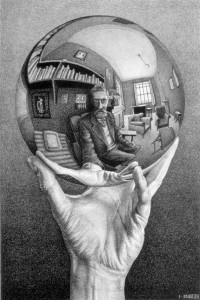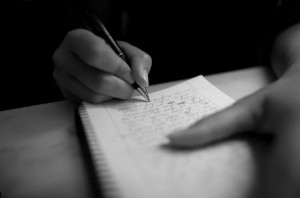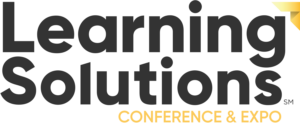This week’s #lrnchat explored the value of reflection for learning, so it seems an appropriately meta time time add another post to my long-dormant “Reflections on #lrnchat” series of posts.
I always find looking at the questions that are used to loosely guide the conversation as a nice way to see the overall theme of the chat. Here are the discussion questions that were presented to the group:
Q1) How do you support your own reflections? (When learning, questioning, discovering, debating, etc)
Q2) How is regular writing a good tool for reflection?
Q3) How is diagramming/sketching a good tool for reflection?
Q4) How are digital ‘tracks’ of your actions a good tool for reflection?
Q5) How can we help work products be good tools for reflection?
Q6) What interferes with reflecting?
Q7) How can we help, encourage, aid others to reflect more and see it’s importance?
Reflection is something I’ve always valued personally, and something that I’ve always felt is critical to include in the learning programs I have built. It’s also one of the first things I see people allow to fall off their plate in the never-ending battle of “Important Vs Urgent”. We know that reflection is important, and we know that it has great value, but we find it hard to stop and allocate time for reflection when the next thing is sitting there, waiting for us to start working on it.
Supporting Personal Reflection
 I try to build time into my schedule for reflection whenever I can. The more important a topic is, the more important it is to me to allocate time for reflection. It used to be a case of trying to find a chunk of time that I could allocate to reflection. While I still do that (especially for larger events like attending a conference) I have found great value in taking small amounts of time to reflect – even 5 minutes – immediately after I learned something new or completed a task. I have a notebook that I use for all of my notes, including reflection. Even in those short bursts, I’ll take out the notebook and then mentally ask myself some reflective questions. If you need examples of questions to ask yourself that can help with reflection, check out Jane Bozarth’s new book Show Your Work. There are a number of great questions included in the section covering reflection, such as:
I try to build time into my schedule for reflection whenever I can. The more important a topic is, the more important it is to me to allocate time for reflection. It used to be a case of trying to find a chunk of time that I could allocate to reflection. While I still do that (especially for larger events like attending a conference) I have found great value in taking small amounts of time to reflect – even 5 minutes – immediately after I learned something new or completed a task. I have a notebook that I use for all of my notes, including reflection. Even in those short bursts, I’ll take out the notebook and then mentally ask myself some reflective questions. If you need examples of questions to ask yourself that can help with reflection, check out Jane Bozarth’s new book Show Your Work. There are a number of great questions included in the section covering reflection, such as:
- What did I learn from this?
- Why did this particular (event, barrier, success, accident) happen? How can it be explained?
- What assumptions did I make? How valid were these?
- What can I do differently next time?
The Power of Writing and Sketching for Reflection
For me, writing is the most powerful exercise I have for reflection. Take this post as an example. This post is a reflection of a discussion that took place in #lrnchat. During the live discussion, I’m reflecting a bit, but moist of my focus is on conversation. When I sit down and decide to write a post that reflects on the chat, the context I build between the topic and my life grows deeper. I’m making new connections and strengthening existing ones through the thought-process involved in putting my reflections into words for others to read. It enables me to take those reflective questions I mentioned earlier and really explore them deeply.
 I write often – or at least try to – and find that my reflective posts sometimes take the longest to write. I don’t mind that at all. The reason they take longer is that there’s usually a lot of editing. As I continue writing, I’m developing deeper context, and usually a few times during the process I’ll make a connection that I didn’t see before. When that happens, it can change the narrative of the entire post. I relish these moments because it shows that I’m developing a deeper understanding of the topic and how it affects my life and work.
I write often – or at least try to – and find that my reflective posts sometimes take the longest to write. I don’t mind that at all. The reason they take longer is that there’s usually a lot of editing. As I continue writing, I’m developing deeper context, and usually a few times during the process I’ll make a connection that I didn’t see before. When that happens, it can change the narrative of the entire post. I relish these moments because it shows that I’m developing a deeper understanding of the topic and how it affects my life and work.
I know a growing number of people that feel the same way about sketching that I do about writing. It adds a visual aspect to the reflection puzzle that is very powerful. I’ve heard a number of people say they can look at a drawing they made over a year ago and instantly recall the context around the discussion during which it was written. That’s extremely powerful and a reason I hope to develop more sketchnoting skills for myself.
The Reflective Power of Digital “Tracks”
 Have you ever looked at a photo from years ago and instantly been filled with memories from the moment it was taken? I have a photo from my wife and my wedding hanging on our wall. When I look at it, I instantly recall the way I felt, the way she looked, the feel of the heat, the sound of my nephews laughter… all as if it were happening right now.
Have you ever looked at a photo from years ago and instantly been filled with memories from the moment it was taken? I have a photo from my wife and my wedding hanging on our wall. When I look at it, I instantly recall the way I felt, the way she looked, the feel of the heat, the sound of my nephews laughter… all as if it were happening right now.
One of the things I love about the digital world we live in is the ability for me to add context to my digital footprint that enables me to revisit moments where I learned or did something in the past. One of the tools I use often is a digital bookmarking tool called Diigo. Any links I save online are done with Diigo, and I add contextual tags to the bookmark so I can remember why I founds the resource valuable. When I perform a search on my Diigo library, the second the search results come back, I am beginning to revisit and reflect in the content I saved, as I remind myself why I tagged the content in the first place.
Another two examples of reflection via my digital footprint are Foursquare and Timehop.
Foursquare most people know about – it’s a social media application that enables people to “check-in” at places they visit. I have all of my check-ins archived in Evernote. On occasion I will look review the Evernote notebook that has all of my check-ins and review it much the same way you might look through a photo album. I am reminded of places I’ve visited in the past, and what I did or learned there. I will often find myself asking reflective questions to myself as I do, such as “What did I learn while I was there?”
Timehop is a relatively new app that I use on iPhone. It links to your social media accounts to present you with a daily trip down memory lane of what you were doing on this date in years past. I expected it to be a great personal reminder of my life – sort of a daily bite-sized photo album. What I didn’t expect was how much of a great resource it has been for reflection. I get reminded about tweets I posted – most of which are professionally based – as part of my daily list. I am reminded of conversations I’ve had, links I’ve shared, and things I’ve done. While Timehop seems to be the type of app that takes only a minute or so of your day, I often find the trip down memory lane being a starting point on a deeper reflective dive as I revisit topics and conversations from the past, thinking about what I learned then and what I can still learn today.
Sharing Your Work as Reflection
 Another great way to reflect on learning or a task is to share the actual output associated with it with others. The best example of this I see is the eLearning Guild’s DemoFest events. At DemoFest, people bring their projects and display them in a science fair-like environment. There’s are huge benefits in sharing your work (again, check out Jane’s book), one of which is the power it adds to reflection.
Another great way to reflect on learning or a task is to share the actual output associated with it with others. The best example of this I see is the eLearning Guild’s DemoFest events. At DemoFest, people bring their projects and display them in a science fair-like environment. There’s are huge benefits in sharing your work (again, check out Jane’s book), one of which is the power it adds to reflection.
As an example, when people bring their projects to DemoFest, there is tremendous opportunity for reflection. First, most people will take a deeper look at their projects – dotting their Is and crossing their Ts – before they would be willing to share them in public. That deeper examination, including looking at the project from the perspective of someone seeing it for the first time, is very powerful for reflection. Then, when you are sharing your project and talking with others, you will naturally be asked questions, perhaps even some that you had not considered yourself. Sharing your work with others and inviting feedback is one of the most powerful forms of reflection. It’s what makes DemoFests so powerful.
Hurdles and Enablers to Reflection
The biggest hurdle to reflection, at least for me and those I speak with, is time. It’s not a question of “I don’t have time for reflection”, though that’s usually the face this hurdle takes. To me, it’s more a case of not prioritizing it. As I said earlier, sometimes I will take a few minutes to reflect immediately after I learn something or complete a task. Those few minutes of thought and writing are often what makes the context stick. It’s also what makes a lot of conceptual learning actionable, which is really what it’s all about. Another hurdle is culture. It’s hard to reflect and show your work to others in an environment that does not value sharing.
 None of these are overwhelming though. In fact, as I was writing this and reflecting on my own thoughts, I made a change. Originally this section talked about Barriers and Enablers, and I needed to change that. A barrier keeps you from getting somewhere; a hurdle is something that’s in your way but you can still overcome. That’s the perspective we need to view reflection through. Yes, there will be hurdles that get in the way of reflection, but we can overcome the hurdles if we see reflection as important enough.
None of these are overwhelming though. In fact, as I was writing this and reflecting on my own thoughts, I made a change. Originally this section talked about Barriers and Enablers, and I needed to change that. A barrier keeps you from getting somewhere; a hurdle is something that’s in your way but you can still overcome. That’s the perspective we need to view reflection through. Yes, there will be hurdles that get in the way of reflection, but we can overcome the hurdles if we see reflection as important enough.
Enabling reflection is easy. Encourage yourself and others to share early and often. When you learn something, talk with others about it or write down how it impacts your life. Ask questions constantly and intentionally. And most importantly – prioritize it and make sure you allocate time for reflection.
The last enabler to reflection kind of brings the whole post full circle in a way. Share your reflections with others. When possible, share reflections as publicly as possible. Not enough people know how powerful reflection is both for learning and performance improvement. The more examples there are of people “reflecting out loud”, the more awareness there will be regarding the benefits of reflection.
Until next time #lrnchat-ers.







